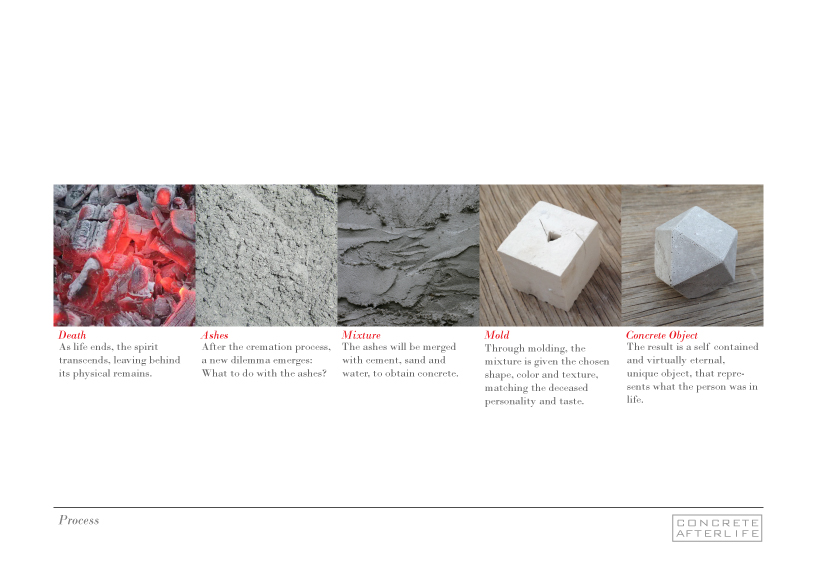
concrete afterlife by arturo acosta from mexico
designer's own words:
2 Wrappings of mortality.- Concrete Afterlife
"Ashes to ashes, dust to dust"; the no escaping destiny we all face one day. And with the steady increase in the popularity of cremation as a corpse disposal method, this passage becomes more real than ever.
In the United State the preference for this process has grown from a 26.17% in 2000, to a 42% in 2011 (Cremation Association of North America).
There is a good reason for this, cremation offers many perks over burials or other forms of disposal, ranging from reduced volume of remains, to the nullification of health risks, not to speak of less tangible benefits (Hindu tradition states that burning induces a feeling of detachment into the disembodied spirit, encouraging it into passing on).
This presents a new problem for loved ones of the recently deceased: What to do with the ashes?
Some put the ashes inside a bag, that goes into an urn, and into a niche or the ground. Others take the urn home and display them in a sometimes awkward, or uncomfortable way. The most detached and bold might choose the spread the ashes into a special natural location.
But maybe for some, urns are too impersonal and seem to hide the remains of our loved ones, rather than honour them. Maybe they’d like to let go, and release the ashes in a significative place, but struggle with the fact of dispersing and losing all physical evidence of the existence of that body.
With that people in mind the idea for Concrete Afterlife came to be.
Concrete is one of the most common man-made products, composed mainly by calcined limestone, clay and water, which conforms a paste that solidified, becomes as sturdy as a rock. It can be molded into virtually any shape, can receive additives in the mix which can change its color and/or texture, and requires almost no additional processing to achieve its final form.
The objective is not to contain the ashes inside a concrete container, but to add them to the mixture itself, merging them together. This ash concrete can then take on any figure, only limited by the complexity of the mold. Taking into account the person’s beliefs, tastes, profession, hobbies, into the design, the corpse’s ashes become a self sufficient and unique statement of who he/she was in life, almost as eternal as the soul it has parted with.
The flexibility of the material and process, allow this “concrete avatars” to blend much more easily with its surroundings. Whether it is placed among decorative items in a coffee table or shelf, stands silently on the garden or disguised as an odd looking rock in a remote natural location. It can be split into several different pieces and divided between family members, a small part can be taken apart to create a subtle concrete jewelry piece or it can even be designed in a shape that will assemble with one or more other avatars when the time comes.
And the whole point behind attributing to someones remains a “eternal” physical form that references the personality of the departed, it makes it easier to remind them as the living, breathing, laughing, loving, unique individuals that they once were, and will continue to do so for many generations to come.
Enclosure on attached images and video:
Images:
Process.- Once the corpse is cremated and the ashes grinded, creating a concrete avatar is a
quick and simple process, that can be highly customized, based on the clients needs.
Concept Image 1.- Concrete’s high resistance to temperature change and humidity, allow for a safe life
outdoors. Shape: Hexagonal trapezohedron.
Concept Image 2.- Names, dates, or any other information can be engraved on the piece after molding.
Shape: Dodecahedron.
Concept Image 3.- A single person’s remains can be divided into several pieces. In this case, it was split
into the five platonic solids, which according to ancient greek philosophy were the basic
elements of which all the universe was created (earth, wind, fire, water and ether).
Concept Image 4.- The piece can also be given a form that will assemble or tesselate with other similar
objects, building simple structures in a group. Shape: Truncated octahedron.
Concept Image 5.- A small amount of the ashes can be taken apart to create a concrete jewelry piece.
Shape: Octagonal trapezohedron (section).
Note*.- The rendering of the concrete pieces as geometrical shapes was in response to personal
aesthetic preferences, not due to process limitations.
Video.- Documentation of prototyping process.
Due to time constraints, prototypes were created only as an illustrative mean.They were
cast on pre-existing molds, made for a different process (hence, the waste of
material), and no ashes were added to the mix. The main objective was to test the
moldability of heavy, dense fluid, such as concrete. The pieces shown lack the finishing
touches, such as burr removal and polishing (optional).
Once the corpse is cremated and the ashes grinded, creating a concrete avatar is a quick and simple process, that can be highly customized, based on the clients needs.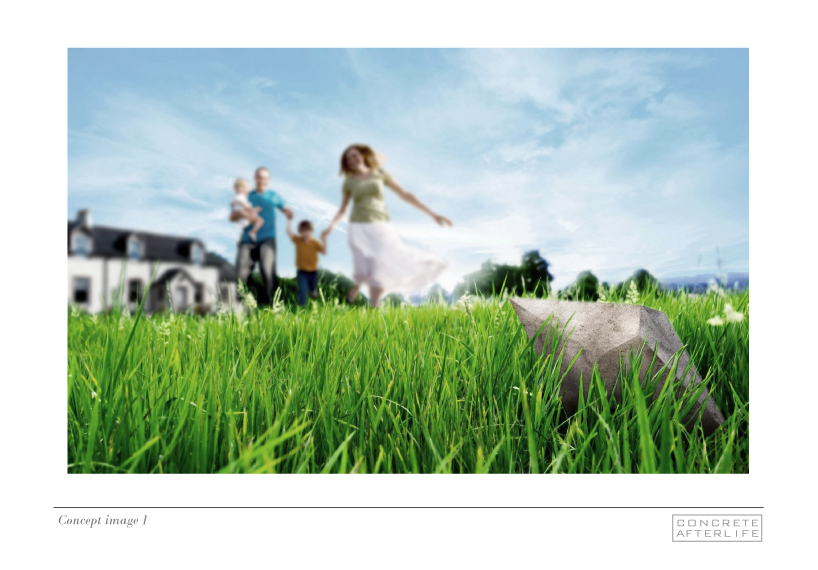 Concrete’s high resistance to temperature change and humidity, allow for a safe life outdoors. Shape: Hexagonal trapezohedron. [jwplayer config=”mplayer” width=”818px” height=”600px” file=”https://static.designboom.com/wp-content/compsub/371055/2013-04-17/video_1_1366233871_7409c39cf8e3809670aaa30fb3aaa28e.mp4″ html5_file=”https://static.designboom.com/wp-content/compsub/371055/2013-04-17/video_1_1366233871_7409c39cf8e3809670aaa30fb3aaa28e.mp4″ download_file=”https://static.designboom.com/wp-content/compsub/371055/2013-04-17/video_1_1366233871_7409c39cf8e3809670aaa30fb3aaa28e.mp4″]video
Concrete’s high resistance to temperature change and humidity, allow for a safe life outdoors. Shape: Hexagonal trapezohedron. [jwplayer config=”mplayer” width=”818px” height=”600px” file=”https://static.designboom.com/wp-content/compsub/371055/2013-04-17/video_1_1366233871_7409c39cf8e3809670aaa30fb3aaa28e.mp4″ html5_file=”https://static.designboom.com/wp-content/compsub/371055/2013-04-17/video_1_1366233871_7409c39cf8e3809670aaa30fb3aaa28e.mp4″ download_file=”https://static.designboom.com/wp-content/compsub/371055/2013-04-17/video_1_1366233871_7409c39cf8e3809670aaa30fb3aaa28e.mp4″]video
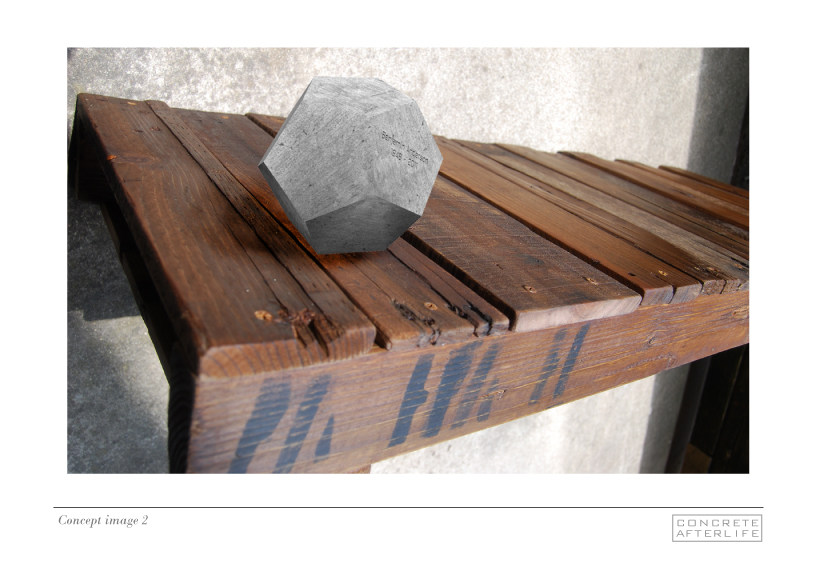 Names, dates, or any other information can be engraved on the piece after molding. Shape: Dodecahedron.
Names, dates, or any other information can be engraved on the piece after molding. Shape: Dodecahedron.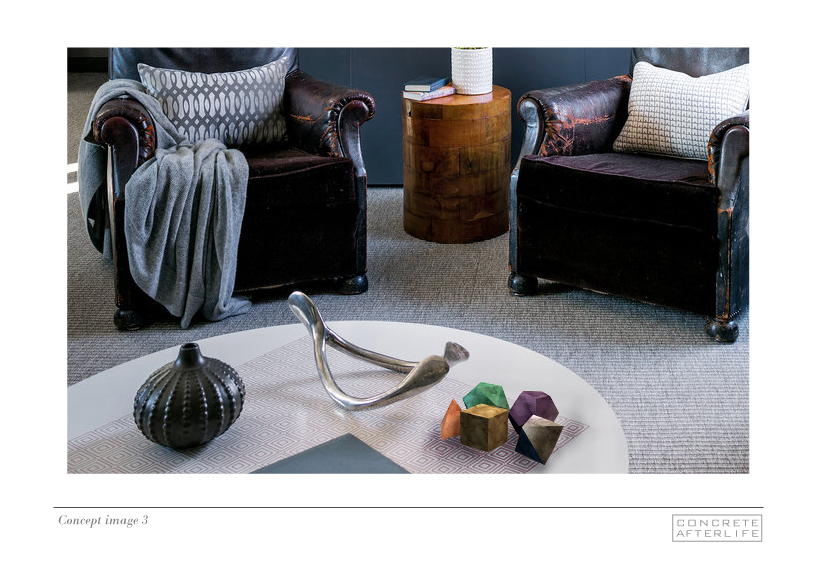 A single person’s remains can be divided into several pieces. In this case, it was split into the five platonic solids, which according to ancient greek philosophy were the basic elements of which all the universe was created (earth, wind, fire, water and ether).
A single person’s remains can be divided into several pieces. In this case, it was split into the five platonic solids, which according to ancient greek philosophy were the basic elements of which all the universe was created (earth, wind, fire, water and ether).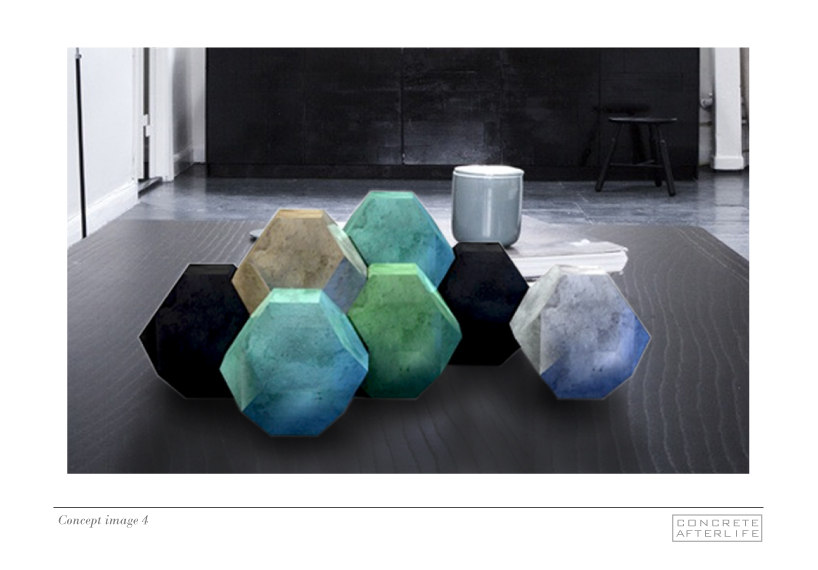 The piece can also be given a form that will assemble or tesselate with other similar objects, building simple structures in a group. Shape: Truncated octahedron.
The piece can also be given a form that will assemble or tesselate with other similar objects, building simple structures in a group. Shape: Truncated octahedron.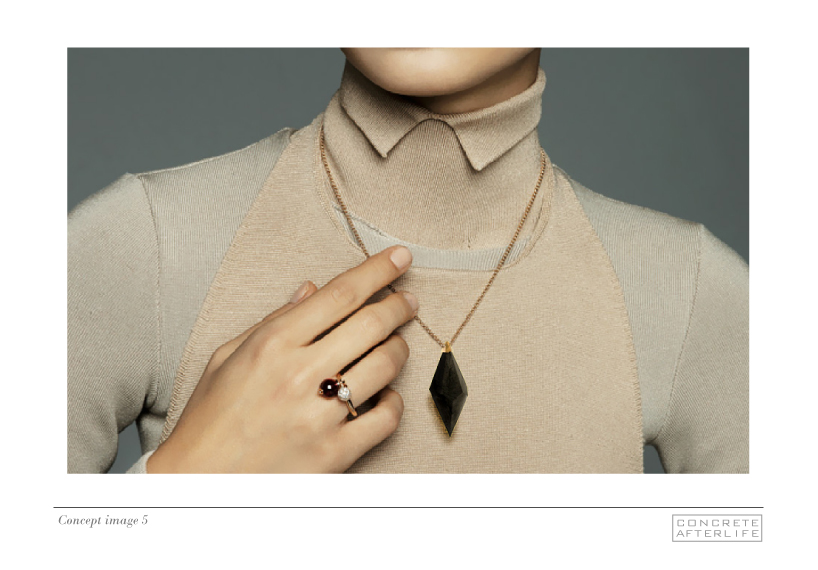 A small amount of the ashes can be taken apart to create a concrete jewelry piece. Shape: Octagonal trapezohedron (section).
A small amount of the ashes can be taken apart to create a concrete jewelry piece. Shape: Octagonal trapezohedron (section).